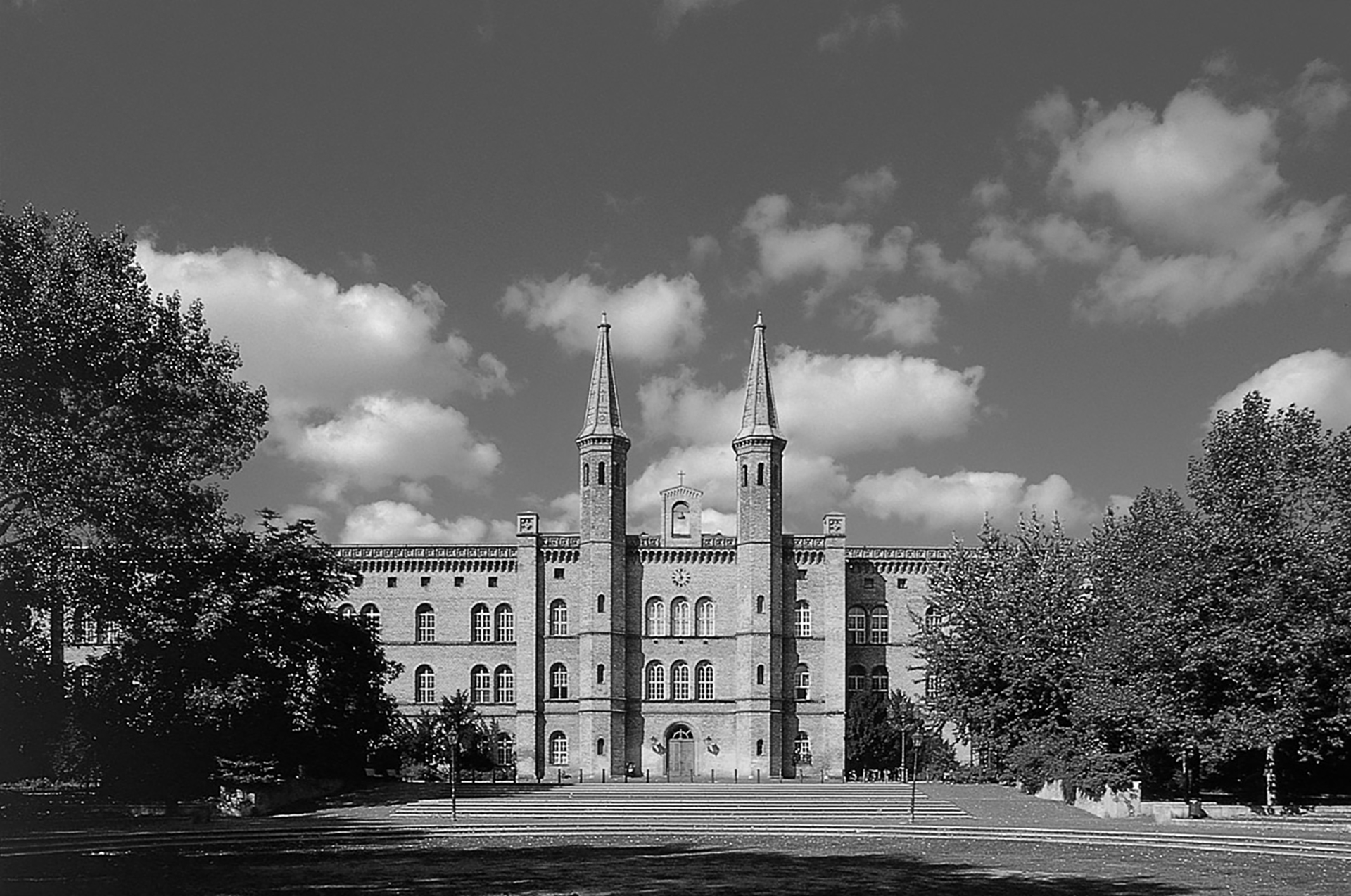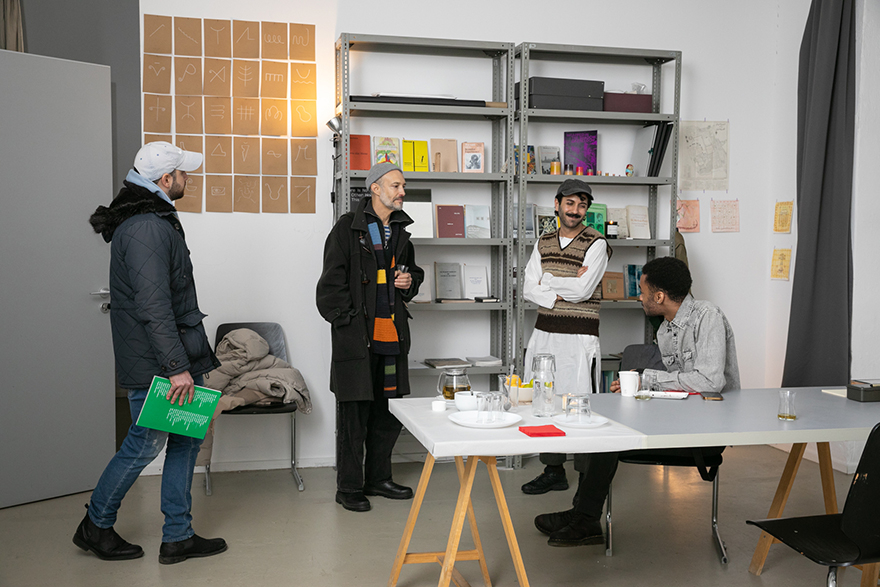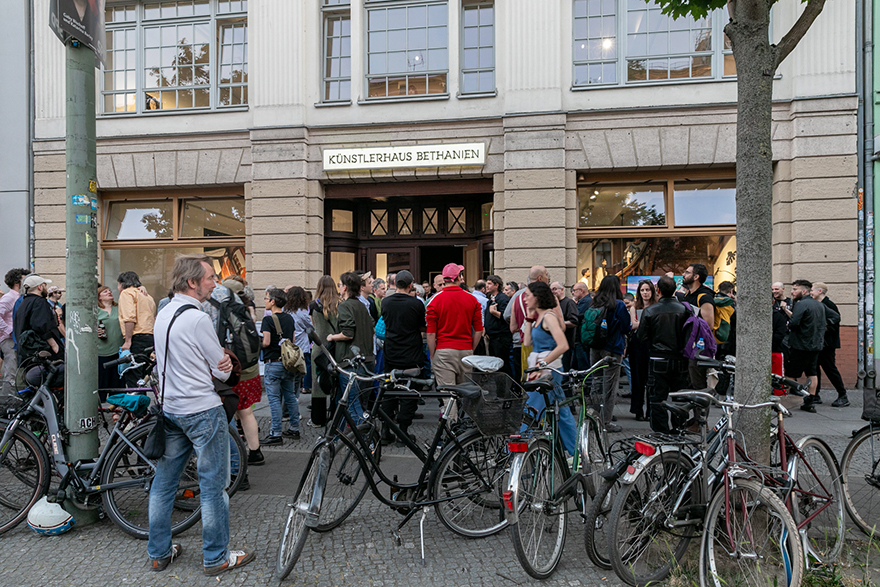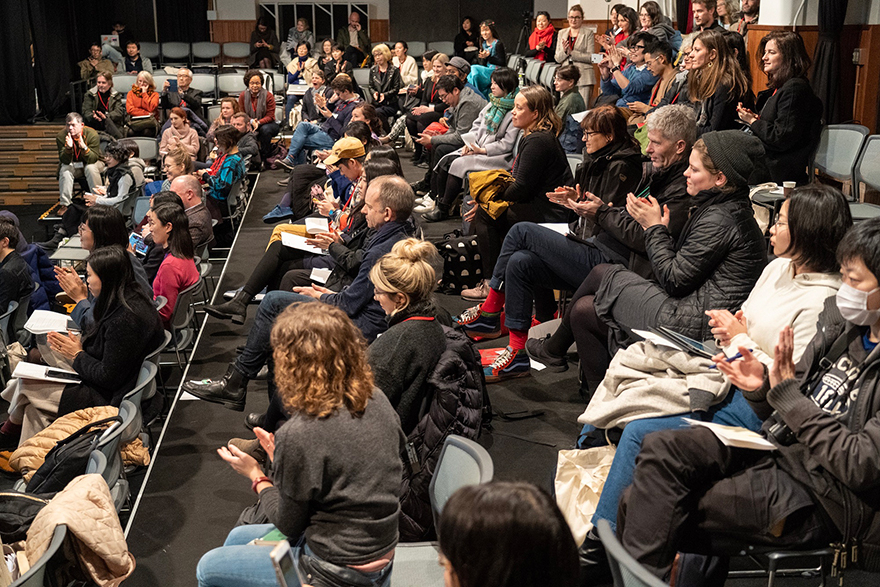The globalization of contemporary art, and the artist-in-residence programs
Part 2: The globalization of contemporary art, and cultural democracy – i.
By Kanno Sachiko

1-1. Where today’s AIR programs began—Künstlerhaus Bethanien
Previously, I wrote about the origins of the artist residency. This second instalment deals with the contemporary artist-in-residence (AIR) system that has evolved rapidly since the end of World War II.
Artist residencies first emerged as fellowships to help art practitioners develop their careers, that is, as exchanges for the purpose of self-improvement. However after the war they became closely connected to the opening up of arts and culture to the wider public, in particular to the cultural democracy movement that unfolded in Europe from the 1950s to the ’70s. Emblematic of this was Künstlerhaus Bethanien [*1], established in Berlin in 1975. Bethanien founder Michael Haerdter [*2]and a group of artist friends presented what was then the city of West Berlin [*3] with a proposal to turn a former church-run hospital building slated for demolition into an international arts center; a place to serve as studio space to support the creative process—rather than a museum for display of the outcomes of that process—and also as a venue for international gatherings of artists. After two long years of dogged negotiations with the municipal authorities, in 1975 they succeeded in opening an arts center complex with studios, a multipurpose hall, and living quarters.[*4] The activities of Bethanien, which embraced contemporary art of every stripe, gradually began to attract attention both at home and abroad, later providing the model for initiatives such as the PS 1 [5] AIR scheme in New York, and Stuttgart’s Akademie Schloss Solitude. [6] In its emphasis on process in contemporary art, as opposed to the completed works displayed in conventional art museums, Bethanien offered new values.

Galya Feierman for Künstlerhaus Bethanien, 2024
Looming large in the background to the founding of Bethanien were extensive attempts in the west during the 1970s to reshape conventional definitions of art, and the value of art; a concerted campaign to democratize culture. This decade saw the blossoming of a number of movements—feminism, student activism, anti-war campaigns, the environmental movement, community activism—that challenged existing values, and the initial rumbles of seismic changes in hitherto widely accepted societal values. Starting with the protests of May 1969, the era was dominated by young people calling for social revolution, spawning alternative culture, challenging society and conventional values musically through rock and punk, and experimenting with the arts in totally new and radical ways. Prior to this, art had meant high art; the passive consumption by a specific social class, in sumptuous cultural venues—the likes of opera, classical music, ballet, and famous works displayed in art museums. But this decade was also characterized by a flourishing of contemporary art, which permitted a great diversity of expression unfettered by notions of social class, as the idea that everyone has the right to experience culture and engage freely in cultural expression, in other words, the concept of cultural democracy, took hold around the world. This led to the establishment of a large number of arts centers in Europe, as settings for freewheeling expression where process took priority, rather than places offering high art of predetermined value and reputation. This was also a period when artists themselves launched and became involved with various movements, and of community arts campaigns that made art and culture more accessible to ordinary people.
Germany moreover possessed a unique background within this social and historical climate: its division into east and west, including the capital Berlin, following defeat in the war, with each side diligently disseminating its own propaganda. Bethanien, situated in west Berlin, invited overseas artists to spend time there on residencies as a symbol of democracy and freedom. From Japan these artists included theater director Ohta Shogo, and dancer Ohno Kazuo. Bethanien relocated in 2010, and now operates under a new system, but continues to run its AIR program.

Galya Feierman for Künstlerhaus Bethanien, 2024
Michael Haerdter was also involved in the 1993 launch of international AIR network Res Artis [*7] , the aim of which was to facilitate the exchange and partnering of artists between AIR programs, and share information and expertise. Currently, 650 organizations in 80 countries are registered with Res Artis. In 2019 an international Res Artis conference titled “Creative Encounters” was hosted by the Kyoto Art Center, attracting AIR organizers from around the world to the ancient capital to engage in passionate discussions on AIR topics. [*8]
[*1] Künstlerhaus Bethanien(viewed February 25, 2025).
[*2] Michael Haerdter(viewed February 25, 2025).
[*3] Wast Berlin and East Berlin were unified as Berlin in 1990.
[*4] Künstlerhaus Bethanien – history(viewed February 25, 2025).
[*5] Pioneering alternative space established in 1971 that merged with MoMA in 2000 and is currently known as MoMA PS1. MoMA PS1(viewed February 25 2025).
[*6] Akademie Schloss Solitude(viewed February 25 2025).
[*7] Res Artis(viewed February 25 2025).
[*8] AIR_J>(viewed February 25 2025).
1-2. The meaning of AIR programs in today’s world
In a previous role with the Japan Foundation, on learning that Künstlerhaus Bethanien founder Michael Haerdter was due to visit Japan I hastily organized a symposium on the topic of AIR programs. During Haerdter’s keynote speech, it was his discussion of the following seven different ways in which AIR programs have meaning that made a particularly lasting impression.
(1) As globalization advances, AIR programs embody three key words for the times: mobility, globality, and temporality.
(2) As transnational settings, and places for the creation of collaborative work. In other words all art, rather than being confined to a country or particular culture, has the power to transcend national and cultural differences and frameworks, and stimulate communication and interaction. An AIR program must therefore be a transnational setting where artists of different cultural backgrounds can congregate.
(3) As settings that generate ongoing dialog, encounters and synergy with artists, audiences, and the community.
(4) As think-tanks attracting the latest art research and information from around the world.
(5) As places where artists, researchers and curators from all artistic domains, from the visual arts to new media, film, photography, theater, dance and literature, gather and generate cross-disciplinary creativity and inspiration.
(6) For artists, as a retreat of sorts where they can be isolated from worldly cares, and concentrate on creating. At the same time, as marketplaces open to the public, offering an ongoing program of exhibitions and performances.
(7) The existence of an AIR program can serve as a “cultural guarantee” for that location, ie ensuring that the location is linked culturally to the wider world, and open to that world. To achieve this, the AIR program must be a setting that encourages the formation of strong global networks.
What Haerdter identified here is none other than the very essence of the AIR program in the world of contemporary art. One does not have to mention the likes of Van Gogh or Gauguin to understand that artists have been described since antiquity as cosmopolitan creatures journeying between culture and culture on a quest for new inspiration and creation. Today, that movement of artists across borders physical and other, supported by the AIR system, is accelerating, and also, essential.
1-3. AIR programs and globalization
Amid the globalization that constitutes a great current of our age, one that is also exposing cultural friction, religious confrontation, and conflict, the world has by and large come to consist of multicultural societies in which coexisting cultures and races share a single nation or region. In the AIR system we may perceive a model for deepening understanding of different individual characteristics and cultures, as the creativity of cities and communities is enhanced through the arts, with artists from different cultural backgrounds meeting in one place, inspiring and learning from each other. This is exactly the kind of model needed in today’s society. Naturally it comes with the risk of doing the reverse: acting as a catalyst for misunderstanding or conflict. But it is in the overcoming of such risk that friendship, trust, empathy, understanding and respect are born, and grow stronger.
And there has indeed been a shift over the years toward exploring ways to treasure unique values and cultures, instead of promoting uniformity, and achieve respectful, mutual understanding. In a modern society characterized by endless confrontation and discord arising between different cultures, the result is growing potential for the presence of artists, who have always traversed different cultures and created new values, and for the AIR programs that make that traversing possible.
This also applies to AIR programs within Japan. Amid the current pervasive hopelessness in Japanese society, it is artists and creators from elsewhere who will break down barriers and destroy existing values in the cause of creating. This may well be what our times demand.

Res Artis Meeting 2019 Kyoto – Creative Encounter: Reimagining Residencies
Image source : AIR_J : Online Database of Artist in Residence Programs in Japan
Kanno Sachiko
AIR Lab Arts Planner/Researcher
Kanno became an independent art organizer and researcher after working for the British Council Tokyo and the Japan Foundation. She received her MA and PhD in Cultural Resources Studies from the Graduate School of Humanities and Sociology at the University of Tokyo and a postgraduate degree in Decorative Arts History at the University of Glasgow. Her expertise includes artist-in-residence programs, UK cultural policy, and international cultural exchange. Notable projects as a writer include Gendai āto to gurōbarizēshon – Ātisuto in rejidensu o megutte [Globalization of contemporary art: Artist-inrResidence] in Gurōbaruka suru bunka seisaku [Globalization of cultural policy] (Tokyo: Keiso Shobo, 2009), and as co-editor, Ātisuto in rejidensu: Machi・hito・āto o tsunagu potensharu [Artist-in-residence: On the potential to connect communities, people and art] (Tokyo: Bigaku Shuppan, 2023).